Writings
"Media Catalogue for Life"
(Gijutu to Ningen) 1981 (collaboration)

Numerous little magazines and newspapers were published by many people from the middle of the 60's to the beginning of the 80's in Japan. This book introduced more than one hundred typical magazines and newspapers. Some newspapers were published by political organizations which struggled against the Vietnam War, and some magazines argued about problems of gender and sex roles. These newspapers and magazines deal with wide ranging topics from global ploblems such as environmental destruction to personal matters. But they have something in common, which is, that all of them were published voluntarily by ordinary people.
"Sociology of Lifestyle" (Sekai Sisou sha) 1982

This book contains mainly what I wrote in my late twenties. In those days I had to complete my master thesis, and I serialized a long essay titled "Blowin' in the Idiot Wind" in a town magazine in Kyoto. Besides that, I had a column in a monthly magazine and introduced little magazines and newspapers. What a striking number of essays, colums and papers I wrote in those days. Though I don't necessarily agree with my attitude at that time, I can't stop feeling nostalgia in what I used to be. I feel the same way with the times of the 60's.
"my Simple Life" (Chikuma Shobo) 1988
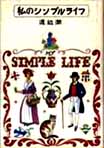
When I wrote this book, I was in my mid-thirties with two children. As I was very conscious about my lifestyle, I was worried about how to relate to my partner and my children. So it was no wonder that my concern for such an every day life became a main source of my essays and papers. The title "My Simple Life" was named by the editor of this book . He also came up with the text, "New Life Report by New Generation", for the cover of this book.
Now my two sons are in their late teens. I am beginning to relate to them as adults. Already they are beginning to go their own ways. "You go your way, and I'll go mine." If I am offered to write a new book about New Life Report, it would be about how I relate with my partner.
"Micro-sociology of Media" (Chikuma Shobo)1989
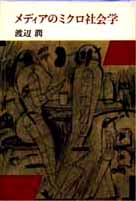
"A daughter enjoys a long conversation over the telephone. A father seemingly displeased stares at her. His image of the telephone is different from hers. This book is an anthropology of new media which has been multiplying in our everyday life."
When I wrote "My Simple Life", I got interested in analyzing some media from a new point of view. I was fascinated by the theory of Erving Goffman, that is 'Dramatism', and I wanted to see various phenomena around me through that theory. We are used to looking at the mass media as a huge information network. But we also understand that mass media exists for us as a means of face-to-face communication, if we see it from our side. The television and radio are our pseudo-acquaintances or friends. I think that we need to make a macro and micro analysis at the same time.
"Desire of Media" (Shinyo sha) 1994
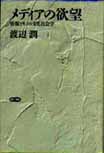
Why do we desire to get many commercialized products? Why do we try to express ourselves through such objects? Why can't we relate to others without some media or goods? Not to mention the telephone and personal computer, various products which are not usually taken as media are being used as important media. We are very accustomed to using them that way, without which we can't show ourselves to others, and hesitate to encounter others. I tried to find the answer to these questions.
Translations
"The Party of Eros" (Shinsen sha) R.King, 1978 (collaboration). Originally published by Dell Publishing Co., Inc., 1972.

"I've read The Party of Eros with admiration..........and, what's more, interest. It's informative as cultural history; clear in its, analysis of the thought-system of the four erotical-political ideologues it concentrates on ; and born sympathetic and reasonable in its criticism."
(Dwight Macdonald)
".......a useful guide to several major thinkers.......He stresses the social sexual side of their urge for extreme change........It is simply not possible to ignore a work like this........original and fresh."
Charleston News and Courie>
"The pursuit of Loneliness"(Shinsen sha) P. Slater, 1980.Originally published by Beacon Press in 1976.
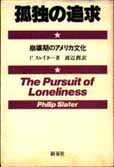
"If I had to select a single book by which to tell a stranger what life in this country had become and why, it would be this one."
The New York Review of Books
"........a brilliant, sweeping, and 'relevant critique of modern America.........an insightful, wellwritten and thought-provoking book that illumines each of the many aspects of the American culture that it touches."
Kenneth Keniston in The New York Times
"Sociology of Housework"(Shorai sha )A.Oakley, 1980 (collaboration). Originally published by Panteon Books, a division of Random House, inc., 1974.
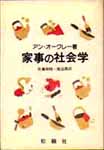
"This companion volume to Dr. Oakley's well-received Woman's Work will be required reading for anyone interested in issues affecting women's liberation. It challenges both the conventional trivialization of housework and the sociological neglect of housework as a serious topic."
"The New Statesman calls 'an intelligent, stimulating, densely-argued book,' Cynthia Fuchs Epstein writes that the companion volume, Womens Work, "is of the utmost importance for anyone who wishes to analyze the current position of women in any historical and intellectual context." And the Times Literary Supplement calls both books "original and absorbing."
"The Pencil"(Shobun sha) in H.Petroski, 1993 (collaboration). Originally published by Beacon Press in 1990.
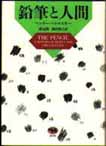
We use it evere day of our lives. It is a virtually invisible yet universal and indispensable part of our world culture. Its function is beyond comment and directions for its use are unwritten. It deserves a celebration, and now it has one.
In this fascinating and charmingly illustrated book, Henry Petroski looks at the pencil and sharpens our appreciation of it. He traces its origins back to ancient Greece and Rome and its present incarnation to the sixteenth century and the discovery of graphite in England. He shows us how it is made. He tell's the stories of the pencil makers Faber and Dixson and Henry David Thoreau. Petroski seeks out the secret behaind the miracle of the pencils survival against such formidable competitors as the pen, the typewriter and the computer.
"How to Lie with Maps"(Shobun sha) M.Monmonia, 1995. Originally published by The University of Chicago Press, 1991.
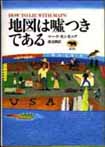
"A useful guide to a subject most people probably take too much for granted. It shows how map makers translate abstract data into eyecatching cartograms, as they are called, It combats cartographic illiteracy. It flights cartographobia. it may even teach you to find your way. For that alone, it seems worthwhile." The New York Times
"A reading of this book will leave you much better defended against cheap atlases, shoddy journalism, unscrupulous advertisers, predatory special-interest groups, and others who may use or abuse maps at you expense.
Papers
"Looking at Our times through Rock Music"
Faculty of Humanics Review,Otemon Gakuin University, No.1, December, 1995, pp.99-124.
For the past 40 years, rock music has always been created and occupied by youth. It has already acquired a position as a form of culture not only in the young generation but the old one. But, it has been much less considered, especially in Japan, as analyzable in sociology than the televised culture born in the same age. I wanted to look at rock music as a typical contemporary popular culture.
"Media and Popular Music: Looking at Our times through Rock Music Vol.2 "
Faculty of Humanics Review, Otemon Gakuin University, No.2,July, 1996, pp.113-141.
Rock music was born in the USA after World War II as mass produced and consumed culture. And in forty years, it has become a commodity for everyone to hear everyday.
On the one hand, rock music has been widely recognized as a symbol of resistance against adults and there are so many new audio-visual technologies, like tape-recorders, CD players and videocassette-recorders. At the same time, rock music has always had a close relation with mass media such as radio, film, and television.
The theme of this paper is to think about relations of rock music with technology and media. It's relation was named "rock formation" by Steve Jones. His concept and perspective is concentrated on audio mechanical technology. I would like to develope the concept of "rock formation" in terms of mass media.
"Youth Becoming a Culture: Looking at Our Times through Rock Music Vol.3"
Faculty of Humanics Review, Otemon Gakuin University, No.3, December, 1996.PP.131-158
Rock music has been recognized as youth-made music since its birth. We must, therefore, make an analysis of rock music throwing light on "youth" and "youth culture". It is thought that the idea of "youth" or "adolescence" is a product of middle class. But the baby boom in America (and elsewhere) that occured after World War II was the crucial condition of the youth and youth culture. Youth culture transformed into media-made popular culture. Popular music produced by the cultural industry, generated in and supported by youth culture from the 50's to the 90's, for example, rock and roll, punk, reggae, and rap was mostly coming from outside of middle class youth.
My argument is that rock music as youth culture has been interwoven mutually by not only middle class youth, but also African-American, working-class white in America and Britain, and Caribbean. From this point of view, we will see that the real figure of youth culture appeared after World War II.
"What is Personal Computer1,2"
HOME ECONOMICA No. 89, 91. November,1996, and March, 1997
Using Email, I discussed recent phenomena concerning the personal computer and its makers and users with Hirano Hideaki (a professor at Hosei University) and Hattori Hideo (the editor at the magazine). It was a very interesting experience for me.
"Meanings of Popular: Looking at Our Times through Rock Music Vol.4"
Faculty of Humanics Review, Otemon Gakuin University, No.5, December, 1997.PP.?
Rock music belongs to a genre called "popular". Though a genre of popular music is very large, rock music is located in the center. So when we discuss rock music, we must think about "popular music", "popular culture" and "popular" inevitably .
Lawrence Grossberg says that "popular" exists within a complex series of terms (mass, elite, legitimate, dominant, folk, high, low, midcult) and oppositions (civilized versus vulgar, dominant versus subordinate, authentic versus inauthentic, self versus other, same versus different) which are, in various contexts, linked together in different ways.
I want to reexamine some theories about "popular music", "popular culture" and "mass culture" such as that of T.W. Adorno, W. Benjamin, S. Tsurumi, R. Williams, R. Hogart and others. And I will also pay attention to some recent studies by P. Tagg, J. Attli L.grossberg, D. Hebdige and J.Fiske.
What I want to describe is a real image of rock music as the "popular culture" .
|